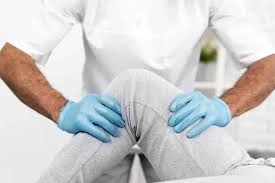
Manual Therapy vs. Modern Devices: Which Is Better With Dr. Mona Salah
Published on: 2025-07-01 | Written by: Dr. Mona Salah, Physiotherapist and Sports Injuries Specialist
Dr. Mona Salah, Specialist in Physical Therapy and Sports Injuries, explains that technological advancements in rehabilitation do not replace manual therapy—they complement it. Each method has a specific role depending on the patient’s condition, type of injury, and response to treatment.
In this article, Dr. Mona Salah presents a clear comparison between manual therapy and modern devices, and explains when each should be used based on her clinical experience.
What Is Manual Therapy?
Manual therapy is a hands-on approach where the therapist uses their hands to manipulate joints and soft tissues. It includes:
-
Joint mobilization and manipulation
-
Deep tissue massage
-
Muscle release techniques
-
Reducing stiffness and improving flexibility
According to Dr. Mona Salah, manual therapy is particularly effective in cases of joint stiffness, muscle tightness, and lower back or neck pain.
What Is the Role of Modern Devices in Physical Therapy?
Modern devices are used for:
-
Electrical muscle stimulation (TENS, EMS)
-
Ultrasound therapy
-
Low-level laser therapy
-
Shockwave therapy
-
Hot and cold modalities
Dr. Mona Salah highlights that these devices are especially useful for reducing pain and accelerating tissue healing, particularly after acute injuries or surgeries.
When to Use Manual Therapy and When to Use Devices?
As explained by Dr. Mona Salah:
-
Manual therapy is ideal for chronic conditions, joint pain, muscle tightness, and postural dysfunction.
-
Devices are more suitable for acute pain, recent injuries, and post-operative recovery.
However, a combination of both approaches often yields the best results, depending on proper case assessment.
Dr. Mona Salah’s Expert Opinion
Dr. Mona Salah emphasizes that the success of physical therapy is not solely about the tools used, but about the therapist’s expertise, accurate evaluation, and continuous follow-up. Some patients benefit more from manual techniques, others from machines, but most require a customized blend.

